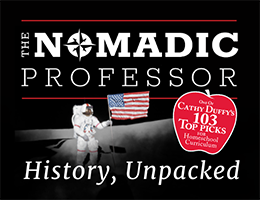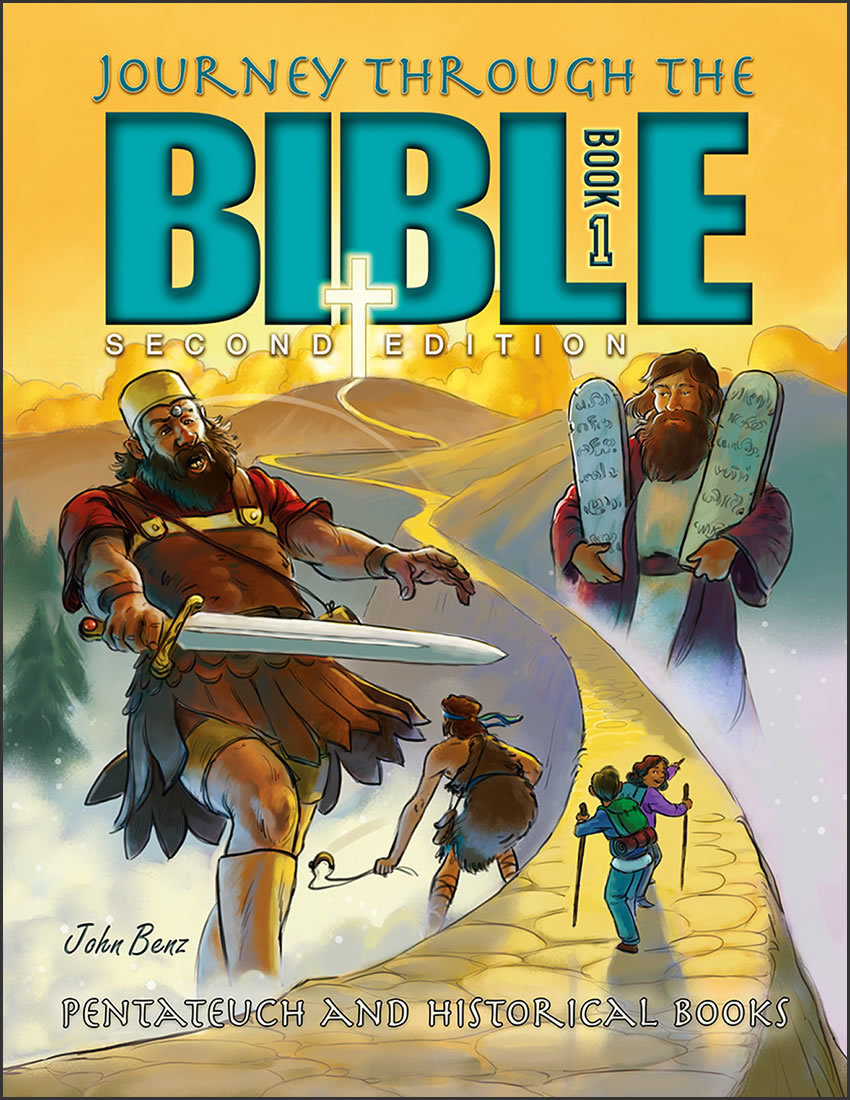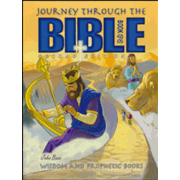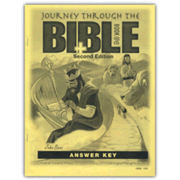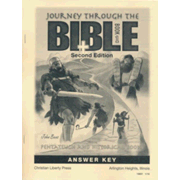The Journey Through the Bible series consists of three courses targeting grades seven through nine. In my opinion, older teens and adults should also find this series to be an excellent guide for reading through the entire Bible. Book 1: Pentateuch and Historical Books covers from Genesis through Esther. Book 2: Wisdom and Prophetic Books picks up with Job and continues through Malachi. Book 3 covers the New Testament.
Each course has four components: a student textbook, a student exercises book, a test packet, and an answer key. Students will also need a Bible. The courses use the New King James Version, and students might have occasional problems if they try to use another version since the courses sometimes deal with the specific wording used in the NJKV.
These courses are ambitious, requiring students to read significant amounts of Scripture for each lesson—often four or more chapters a day. Generally, it makes sense to read the lesson material in the student textbook first. The lesson material for most days is followed by one or two thought questions. Parents can decide how to use these questions—for discussion, written assignments, or simply for students to consider on their own. The thought questions are the only point at which these lessons touch on personal life application, so they are an important component and should not be skipped.
Courses have 160 lessons each, and lessons follow the order of the books of the Bible. Readings are grouped to keep chapters on related stories together even if those readings are spread over two or three days.
Lesson material in the textbooks helps students grasp the big picture as well as details. For example, Lesson 42 in Book 2 presents an overview of the Book of Proverbs. Then Lesson 44 teaches about the four different types of fools described in Proverbs. It points out that there are two different Hebrew words that we translate as “fool”—one has the connotation of stupid and the other has the connotation of evil. Knowing this, students then read Proverbs with much greater understanding.
Courses are also designed to help students keep the entire story of the Bible in mind. For example, the last 24 lessons in Book 1 are review lessons covering back to the book of Genesis, and Book 3 begins with an overview of the Old Testament and a brief summation of the history of the intertestamental period.
Each lesson begins with students reading the text material, after which they should read the assigned chapters in the Bible. While the textbook often shows which chapters are to be read, the dependable place for finding this information is at the top right of each page in the student exercises book. For each lesson, the student exercises book has ten comprehension questions based on the assigned scripture readings plus another three questions based on the textbook reading material. Students might occasionally need to consult additional sources such as a dictionary to find answers to the questions.
The text packets have multiple choice exams for every 20 lessons. These are not cumulative exams. Test questions cover the main ideas, but they sometimes ask trivial questions such as “How long did Daniel mourn on account of his vision in Daniel 10?” (Book 2, Test 8). The answer keys have answers for student exercises, and answers for the tests are found at the back of the test packets.
While the lessons are written from a Protestant viewpoint, for the most part, they avoid theological interpretations that are debatable. Thought questions sometimes raise theological questions that might lead into discussion of different theological views. Because of this, I think it might be an excellent strategy for parents to read at least the student textbook material, then discuss the thought questions with their teens. Students should be able to complete the student exercises on their own.
Together, the three Journey Through the Bible courses comprise an impressive Bible survey course. The textbooks help students understand what they are reading, and the student exercises should help them learn to read the Bible closely and carefully.





